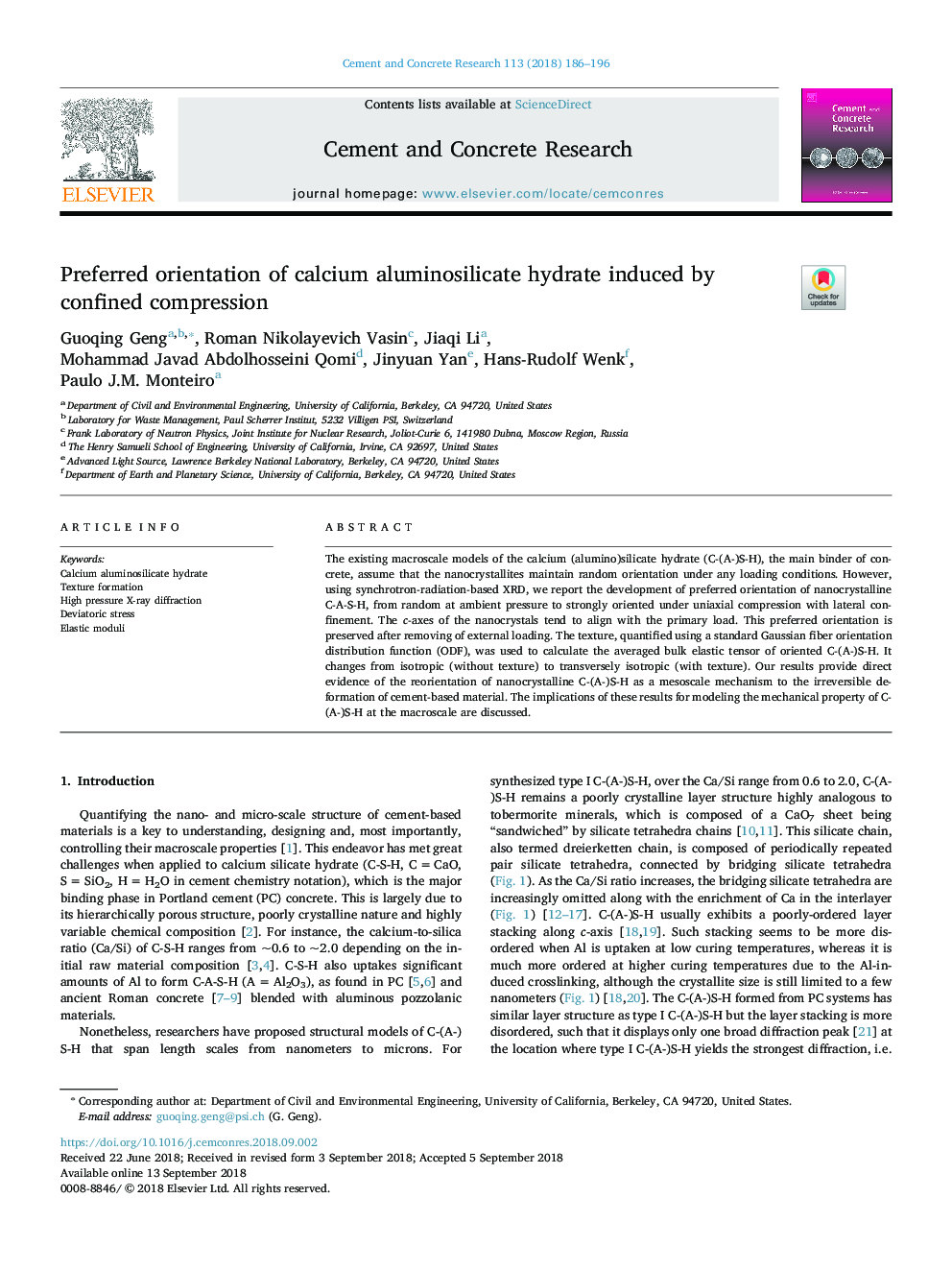| Article ID | Journal | Published Year | Pages | File Type |
|---|---|---|---|---|
| 10155361 | Cement and Concrete Research | 2018 | 11 Pages |
Abstract
The existing macroscale models of the calcium (alumino)silicate hydrate (C-(A-)S-H), the main binder of concrete, assume that the nanocrystallites maintain random orientation under any loading conditions. However, using synchrotron-radiation-based XRD, we report the development of preferred orientation of nanocrystalline C-A-S-H, from random at ambient pressure to strongly oriented under uniaxial compression with lateral confinement. The c-axes of the nanocrystals tend to align with the primary load. This preferred orientation is preserved after removing of external loading. The texture, quantified using a standard Gaussian fiber orientation distribution function (ODF), was used to calculate the averaged bulk elastic tensor of oriented C-(A-)S-H. It changes from isotropic (without texture) to transversely isotropic (with texture). Our results provide direct evidence of the reorientation of nanocrystalline C-(A-)S-H as a mesoscale mechanism to the irreversible deformation of cement-based material. The implications of these results for modeling the mechanical property of C-(A-)S-H at the macroscale are discussed.
Related Topics
Physical Sciences and Engineering
Engineering
Industrial and Manufacturing Engineering
Authors
Guoqing Geng, Roman Nikolayevich Vasin, Jiaqi Li, Mohammad Javad Abdolhosseini Qomi, Jinyuan Yan, Hans-Rudolf Wenk, Paulo J.M. Monteiro,
